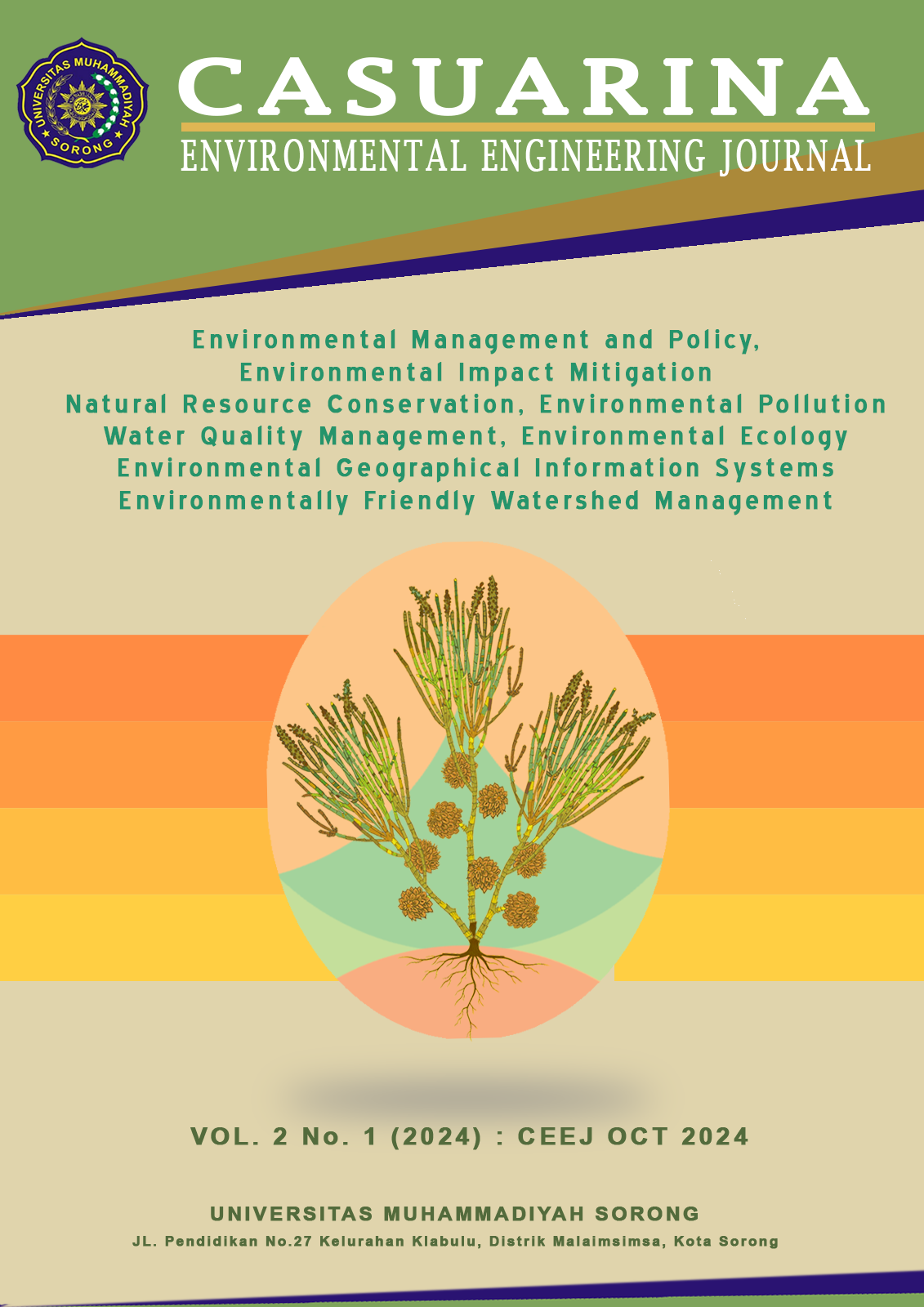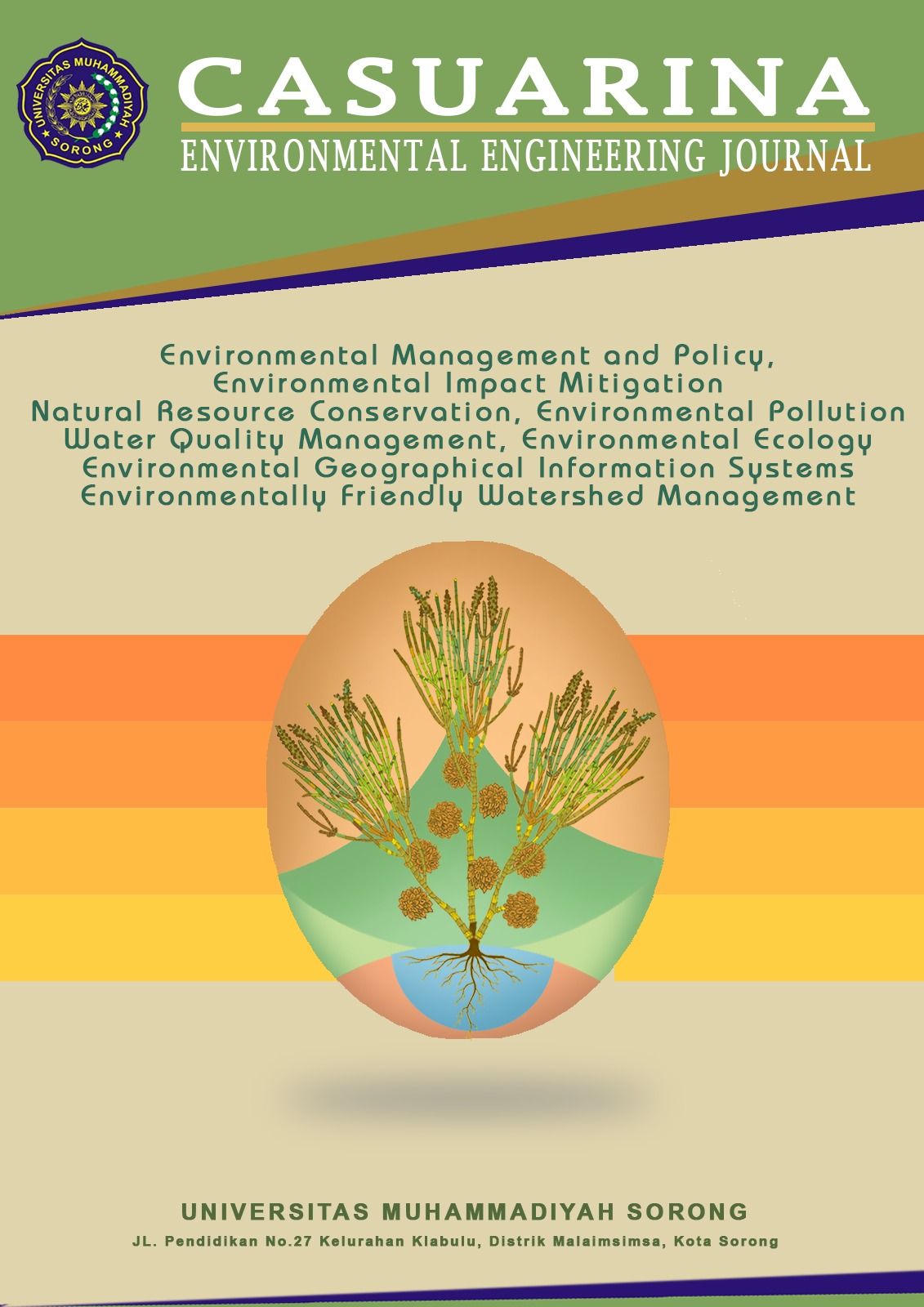Uji Coba Atap Hijau untuk Pengelolaan Airstrom dan Pengurangan Efek Panas Perkotaan di Singapura
DOI:
https://doi.org/10.33506/ceej.v1i2.3455Keywords:
Teknologi, Atap vegetasi, Atap Hijau, Heat Island EffectAbstract
Penelitian ini mengevaluasi manfaat green roof dalam manajemen air hujan dan mitigasi urban heat
island effect di Singapura. Sistem green roof test bed yang diuji terdiri dari 3 unit, di mana 2 unit
berupa atap vegetasi dan 1 unit atap tanpa vegetasi sebagai kontrol. Hasil menunjukkan green roof
dapat secara signifikan menurunkan suhu permukaan atap hingga 7,3°C dan suhu udara sekitar
hingga 0,5°C dibandingkan atap tanpa vegetasi pada siang hari. Untuk curah hujan 18 mm, green
roof dapat mengurangi puncak limpasan dan menunda puncak limpasan.
References
. Xiaosheng Qin, Xiangyu Wu, Yee-Meng Chiew dan Yan Hong Li, “A Green Roof Test Bed for
Stormwater Management and Reduction of Urban Heat Island Effect in Singapore” British
Journal of Environment & Climate Change. Vol (2). 410-420. 2024
Allen MR, Ingram WJ. Constraints on future changes in climate and the hydrologic cycle. Nature.
;419:224–232. DOI:10.1038/nature01092
Onmura S, Matsumoto M, Hokoi S. Study on evaporative cooling effect of roof lawn gardens.
Energy and Building. 2001;33(7):653-666. DOI:10.1016/S0378- 7788(00)0013 4-1
Wong NH, Chen Y, Ong CL, Sia A. Investigation of thermal benefits of rooftop garden in the
tropical environment. Building Environment. 2003;38(2):261-270. DOI:10.1016/ S0360-
(02)00066-5
Alexandri E, Jones P. Temperature decreases in an urban canyon due to green walls and green roofs
in diverse climates. Building and Environment. 2008;43(4):480-493. DOI:
1016/j.buildenv.2006.10.055
Teemusk A, Mander Ü. Greenroof potential to reduce temperature fluctuations of a roof membrane:
a case study from Estonia. Building Environment. 2009;44(3):643- 650. DOI:
1016/j.buildenv.2008.05.011
Metselaar K. Water retention and evapotranspiration of green roofs and possible natural vegetation
types. Resources, Conservation and Recycling. 2012;64:49-55. DOI:
1016/j.resconrec.2011.12.009
Carter T, Jackson CR. Vegetated roofs for stormwater management at multiple spatial scales.
Landscape Urban Planning. 2007;80(1-2):84-94. DOI:10.1016/j.landurbplan.20 06.06.005
Kasmin H, Stovin VR, Hathway EA. Towards a generic rainfall-runoff model for green roofs.
Water Science & Technology. 2010;62(4):898-905. DOI:10.2166/wst.2010.352
Lee DO. Urban warming? - An analysis of recent trends in London’s heat island. Weather.
;47(2):50-56. DOI:10.1002/j.1477-8696.1992.tb05773.x
Streutker DR. Satellite-measured growth of the urban heat island of Houston, Texas. Remote
Sensing of Environment. 2003;85(3):282–289. DOI:10.1016/S0034-4257(03)0 0007-5
Rosenzweig C, Solecki WD, Parshall L, Chopping M, Pope G, Goldberg R. Characterizing the
urban heat island in current and future climates in New Jersey. Environmental Hazards.
;6(1):51-62. DOI:10.1016/j.hazards.2004.12.001
Xie HJ, Chang NB, Daranpob A, Prado D. Assessing the Long-term Urban Heat Island in San
Antonio, Texas based on MODIS/Aqua Data. 20th Biennial Workshop on Aerial Photography,
Videography, and High Resolution Digital Imagery for Resource Assessment, Oct. 4-6, 2005,
Weslaco, Texas; 2005.
Weng Q, Lu D, Schubring J. Estimation of land surface temperature-vegetation abundance
relationship for urban heat island studies. Remote Sensing of Environment. 2004;89(4):467–
DOI:10.1016/j.rse.2003.11.005
Liu K, Minor J. Performance evaluation of an extensive green roof. Paper presented at the Third
Annual Greening Rooftops for Sustainable Communities Conference, Awards and Trade
Show; 4–6 May 2005, Washington, DC; 2005.
Takebayashi H, Moriyama M. Surface heat budget on green roof and high reflection roof for
mitigation of urban heat island. Building and Environment. 2007;42:2971–2979.
Fang CF. Evaluating the thermal reduction effect of plant layers on rooftops. Energy and Buildings.
;40(6):1048–1052. DOI:10.1016/j.enbuild.2007.06.007
Mentens J, Raes D, Hermy M. Green roofs as a tool for solving the rainwater runoff problem in the
urbanized 21st century. Landscape and Urban Planning. 2006;77(3):217-226.
DOI:10.1016/j.landurbplan.2005.02.010
VanWoert ND, Rowe DB, Andresen JA, Rugh CL, Fernandez RT, Xiao L. Green roof stormwater
retention: effects of roof surface, slope, and media depth. Journal of Environmental Quality.
;34(3):1036-1044. DOI:10.2134/jeq2004.0364
Carter TL, Rasmussen TC. Hydrologic behavior of vegetated roofs. Journal of the American Water
Resources Association. 2006;42(5):1261–1274. DOI:10.1111/j.1752- 1688.2006.tb05299.x
Teemusk A, Mander Ü. Rainwater runoff quantity and quality performance from a greenroof: The
effects of short-term events. Ecological Engineering. 2007;30(3):271- 277.
DOI:10.1016/j.ecoleng.2007.01.009
Hathaway AM, Hunt WF, Jennings GD. A field study of green roof hydrologic and water quality
performance. Transactions of the ASABE. 2008;51(1):37-44.
Voyde E, Fassman E, Simcock R. Hydrology of an extensive living roof under sub- tropical climate
conditions in Auckland, New Zealand. Journal of Hydrology. 2010;394(3-4):384–395.
DOI:10.1016/j.jhydrol.2010.09.013
Stovin V, Vesuviano G, Kasmin H. The hydrological performance of a green roof test bed under UK
climatic conditions. Journal of Hydrology. 2012;414-415:148-161. DOI:
1016/j.jhydrol.2011.10.022
Downloads
Published
How to Cite
Issue
Section
License
Copyright (c) 2024 Casuarina: Environmental Engineering Journal

This work is licensed under a Creative Commons Attribution-NonCommercial-ShareAlike 4.0 International License.
Please find the rights and licenses in Casuarina: Environmental Engineering Journal. By submitting the article/manuscript of the article, the author(s) agree with this policy. No specific document sign-off is required.
1. License
The non-commercial use of the article will be governed by the Creative Commons Attribution license as currently displayed on Creative Commons Attribution-NonCommercial-ShareAlike 4.0 International License.
2. Author(s)' Warranties
The author warrants that the article is original, written by the stated author(s), has not been published before, contains no unlawful statements, does not infringe the rights of others, is subject to copyright that is vested exclusively in the author, and free of any third party rights, and that any necessary written permissions to quote from other sources have been obtained by the author(s).
3. User/Public Rights
Casuarina: Environmental Engineering Journal's spirit is to disseminate articles published are as free as possible. Under the Creative Commons license, Casuarina: Environmental Engineering Journal permits users to copy, distribute, display, and perform the work for non-commercial purposes only. Users will also need to attribute authors and Casuarina: Environmental Engineering Journal on distributing works in the journal and other media of publications. Unless otherwise stated, the authors are public entities as soon as their articles got published.
4. Rights of Authors
Authors retain all their rights to the published works, such as (but not limited to) the following rights;
- Copyright and other proprietary rights relating to the article, such as patent rights,
- The right to use the substance of the article in own future works, including lectures and books,
- The right to reproduce the article for own purposes,
- The right to self-archive the article (please read our deposit policy),
- The right to enter into separate, additional contractual arrangements for the non-exclusive distribution of the article's published version (e.g., post it to an institutional repository or publish it in a book), with an acknowledgment of its initial publication in this journal (Casuarina: Environmental Engineering Journal).
5. Co-Authorship
If the article was jointly prepared by more than one author, any authors submitting the manuscript warrants that he/she has been authorized by all co-authors to be agreed on this copyright and license notice (agreement) on their behalf, and agrees to inform his/her co-authors of the terms of this policy. Sentralisasi will not be held liable for anything that may arise due to the author(s) internal dispute. Sentralisasi will only communicate with the corresponding author.
6. Royalties
Being an open accessed journal and disseminating articles for free under the Creative Commons license term mentioned, author(s) aware that Casuarina: Environmental Engineering Journal entitles the author(s) to no royalties or other fees.
7. Miscellaneous
Casuarina: Environmental Engineering Journal will publish the article (or have it published) in the journal if the article editorial process is successfully completed. Casuarina: Environmental Engineering Journal's editors may modify the article to a style of punctuation, spelling, capitalization, referencing, and usage that deems appropriate. The author acknowledges that the article may be published so that it will be publicly accessible and such access will be free of charge for the readers as mentioned in point 3.








